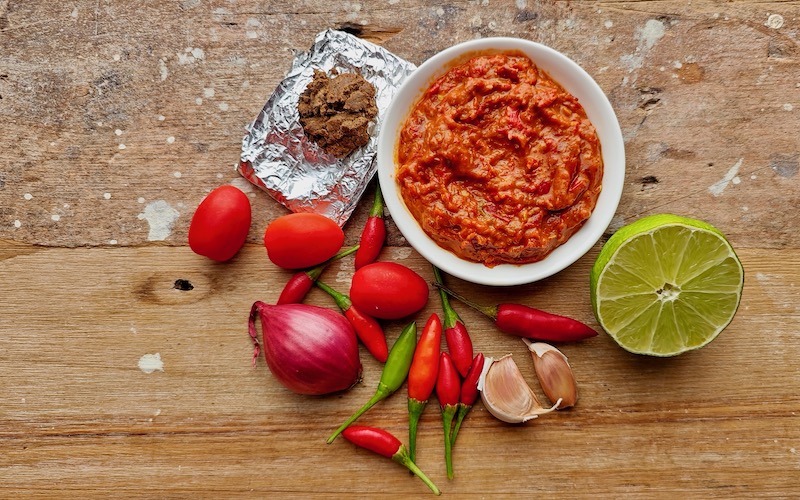

Sambal terasi goreng is the most common of the many sambals found throughout Indonesia. Sambal means chilli sauce and terasi is Indonesia’s pungent shrimp paste, virtually identical to Malaysian belacan and similar to Thai gapi. Sambal terasi originated in Java, where it’s served as a dip for raw and blanched vegetables in a popular Sundanese dish called lalab; it’s also used as a seasoning in many recipes and a condiment at almost every meal. Traditionally the paste is pounded in a mortar but pulse in a food processor if you prefer, just don’t make it too smooth. Uncooked sambal terasi is made in small quantities for each meal, though it can be stored in the fridge for a few days. Most often the vegetables are lightly fried or charred before pounding as we’re doing here (goreng means ‘fried’); this rounds out the flavour and makes them easier to break down. Sambal terasi matang (cooked sambal terasi) involves the extra step of cooking the paste in vegetable oil before stirring in the lime juice; as a lot of the moisture has been cooked off, it will keep refrigerated for a couple of weeks. Generally the smaller the chilli, the hotter it is. If your small red chillies are very small, use 30g, if they’re a bit plumper, you can use 40g. For a milder sambal, use 20g small red chillies and 1 large red chilli with the seeds removed. Try it alongside these easy udang bakar (Indonesian roast prawns).
Makes ¼ cup
Share page on:







